If you’re anything like me, your pets aren’t just animals, they’re family. And if you’re into prepping, like I am, then you’ve probably already got food stored up for yourself and your loved ones. But here’s a question most preppers overlook: what happens to Fido or Whiskers when the grid goes down? How do we ensure our pets don’t just survive but thrive for years if supply chains break down?
After years of research, trial-and-error, and advice from old-school homesteaders, I’ve cracked the code on how to store pet food for 10+ years. Yep, more than a decade of shelf life.
So, whether you have dogs, cats, or even a flock of chickens you treat like royalty, here’s my guide to making your pet’s food last a decade or more.
Step 1: Know What Your Pet Really Needs
Before you go into preservation mode, you need to understand the nutritional needs of your pet. Dogs and cats are carnivores (cats even more strictly so), and they require protein, fat, and certain essential vitamins and minerals. The truth is most commercial pet foods are full of fillers like corn, soy, and wheat. Not only do these go rancid faster, but they’re not ideal for long-term health.
So, before you store anything, ask yourself: what should my pet be eating? For me, this meant switching to a more whole-food, high-protein base. Think of meats, organ meats, and some natural preservatives.
Step 2: Choose the Right Ingredients
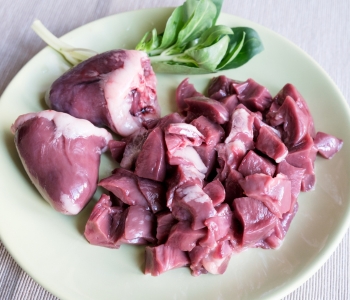 Here are the ingredients I use to build a shelf-stable, nutritious pet food base:
Here are the ingredients I use to build a shelf-stable, nutritious pet food base:
- Dehydrated or freeze-dried meats (chicken, beef, turkey, or fish)
- Freeze-dried organ meats (liver, heart, kidney)
- Bone meal powder (for calcium)
- Dehydrated vegetables (like carrots, sweet potatoes, and green beans)
- Supplements (taurine for cats, omega-3 capsules for skin and coat, multivitamins)
You can buy these pre-packaged or dehydrate them yourself with a home dehydrator. Freeze-drying is the gold standard for shelf life, but a good dehydrator will do the trick if you store the food correctly (more on that below).
Step 3: Mix and Match Recipes
Once you have your ingredients ready, start by combining them in batches. I like to portion out one-week supply bags for each pet, adjusting the amounts based on size and appetite. For example, a batch for my Labrador might look like:
- 2 cups of freeze-dried beef
- 1/2 cup freeze-dried liver
- 1/4 cup dried carrots
- 1/4 cup of sweet potato
- 1 tbsp bone meal
- 1 omega-3 capsule (poke a hole and drizzle the oil in)
Just add hot water when it’s time to serve. Let it sit for 10 minutes to rehydrate. My dog actually prefers this to store-bought kibble!
Step 4: Storage That Stands the Test of Time
This part is crucial. Even the best food will spoil if stored improperly. Here’s how I store pet food for long-term use:
Mylar Bags + Oxygen Absorbers
 Mylar bags are your best friend. I fill each bag with a week’s worth of pet food, toss in a 300cc oxygen absorber, and seal it with a heat sealer. Label each bag with the type of food and the date.
Mylar bags are your best friend. I fill each bag with a week’s worth of pet food, toss in a 300cc oxygen absorber, and seal it with a heat sealer. Label each bag with the type of food and the date.
Food-Grade Buckets
Once the bags are sealed, I store them in 5-gallon food-grade buckets with gamma seal lids. These are waterproof, pest-proof, and stackable. I keep mine in a cool, dry place away from sunlight—my basement is perfect.
Vacuum Sealing
If you’re low on Mylar, vacuum sealing is your next best option. Just be aware that oxygen absorbers are still a good idea, and the vacuum-sealed bags should still be kept in a rodent-proof container.
Step 5: Rotate and Test
Every six months or so, I pull out a random bag to test it. Not only does this ensure your food is still good, but your pet stays used to eating it. Remember: a sudden diet change can upset their stomach.
If the smell, texture, or color is off, I toss it and make a new batch. Better safe than sorry.
Pet-Specific Variations
Every pet has different needs, and tailoring your long-term food storage to your specific animal is key. Here’s how I approach different species:
Dogs
Dogs tend to have more dietary flexibility. They can digest a variety of proteins, some carbohydrates, and even a few vegetables. For dogs, I include dehydrated sweet potato and green beans, which add fiber and nutrients. Dogs benefit from omega-3s for joint health and a general multivitamin for any gaps.
If you have a dog, it’s essential to provide a balanced diet. I also recommend keeping a supply of antibiotics specifically prepared for your four-legged friend, because you never know when problems might arise. You can learn from here which animal antibiotics work just like the ones for humans—and how to build a serious stockpile.
Cats
Cats are obligatory carnivores. That means they must eat meat to thrive. The most important addition here is taurine, an amino acid essential for feline health. Without it, cats can go blind or develop heart problems. I never skip taurine in my cat food mix. I also avoid carbs like rice or potato, which cats have a harder time digesting.
Chickens
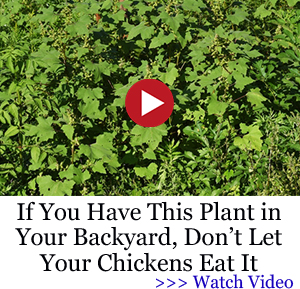 Yes, chickens need prepping too! While they can be free-range in a good environment, long-term storage might be necessary if you can’t let them out or grow fresh feed. Store cracked corn, dried mealworms, and calcium supplements (like crushed oyster shells or eggshells). I vacuum seal mealworms and layer feed in Mylar to stretch it out over years.
Yes, chickens need prepping too! While they can be free-range in a good environment, long-term storage might be necessary if you can’t let them out or grow fresh feed. Store cracked corn, dried mealworms, and calcium supplements (like crushed oyster shells or eggshells). I vacuum seal mealworms and layer feed in Mylar to stretch it out over years.
Just in case you run out of supplies for your chickens, keep in mind that you can feed them this plant, which will double the egg production of your flock and grows almost everywhere in America.
The better fed your chickens are, the better sources of food they’ll provide you. Their meat will be healthier, and the eggs they produce more nutritious. In the lucky event that your chickens produce a lot of eggs, you can learn here an ingenious method to keep them fresh for at least a decade.
Other Pets
Have rabbits, guinea pigs, or goats? Each has its own dietary rules. Rabbits need hay primarily. Guinea pigs need vitamin C-rich foods like bell pepper and kale (dehydrated). Goats? Grains, hay, and minerals. Just make sure you are storing what you know they eat daily.
Bonus Tips from the Field
Here are a few extra nuggets I’ve picked up over the years:
- Add desiccant packs: These helps reduce moisture and are great for extra-damp climates.
- Freeze the bags first: Before sealing, freeze the mix for 72 hours to kill off any bug eggs (you’d be surprised how common that is).
- Train your pet early: Get them used to the homemade mix now, so they don’t reject it in a crisis.
- Don’t forget water: Rehydrated food needs water. Make sure your water storage plan includes extra for pets!
Water is a basic necessity for your pets and for you! No matter how you choose to store it, regular maintenance is key. That means draining your containers from time to time, giving them a thorough cleaning, and refilling them with fresh water.
Personally, I use blue food-grade plastic barrels stored in my shed. Every couple of months, I pull them out, empty them, wipe the interior with a cloth soaked in a mild bleach solution, and then top them off with clean water.
By doing this consistently, I know I can rely on that water being safe to drink when the time comes—because it’s never been sitting stagnant for too long. I also keep a smaller supply inside the house, just in case.
If all that sounds like too much hassle, there’s a clever alternative you might want to check out: this compact water generator that can fit in a backpack. I honestly can’t imagine riding out a serious emergency without it. My family has been using it for over a year now, and it’s made a huge difference.
💧 Click here to see how you can build it yourself in just a weekend!
Is Pet Food Safe For Human Consumption?
In a real crisis, when the shelves are empty and your stockpile’s running dry, you might find yourself eyeing that big bag of kibble or those canned dog meals. Truth is, most pet food that you can get from stores is technically edible by humans.
It’s made from meat, grains, and preservatives—not ideal, but it won’t kill you in the short term. In a total collapse, calories are calories, and pet food can keep you alive. But here’s the warning: it can contain things like animal by-products, high sodium, or unregulated fillers. Long-term use could lead to nutrient imbalances or digestive issues.
If you choose to cook it yourself, you’re reducing those risks.
Bottom line: keeping a bit of pet food in your pantry isn’t the worst idea—it’s cheap, lasts forever, and could save your life. Just don’t make it your first line of defense. Use it when all else fails.
Final Thoughts on Long-Lasting Pet Food
Prepping for your pets isn’t a luxury, it’s your responsibility. In a long-term grid-down scenario, you don’t want to be the one trying to feed your dog stale kibble or scrounging for scraps. With a little planning, you can set your mind at ease knowing your furry companions will be just as prepared as you are.
It’s taken me years to dial in this system, and I’m still learning. But I’ll tell you this: the peace of mind I get knowing my pets are covered for the next decade? Priceless.
So, get started. Get storing. And as always, stay ready.
It doesn’t matter if you’re a man or a woman, young or a senior. You need to know how to protect your family — including your pets — when the worst-case scenarios become reality. Learn stockpiling strategies and property defense tactics from A Navy SEAL’s The Bug-In Guide by Joel Lambert!
You may also like:
Used by U.S. Forces in War Zones… Now Preppers Are Installing It at Home (Video)
10 Survival Items You Should Get From The Pet Store

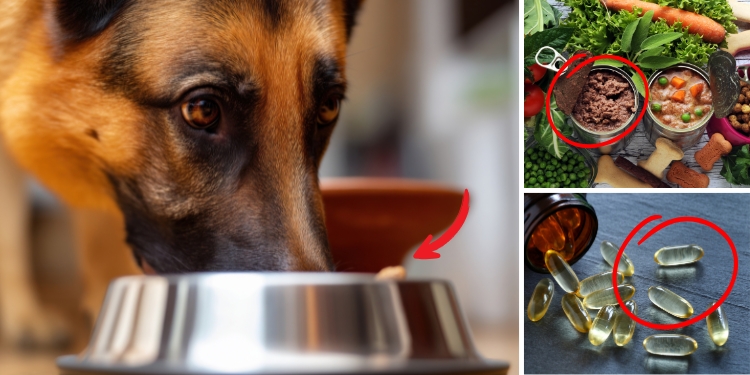
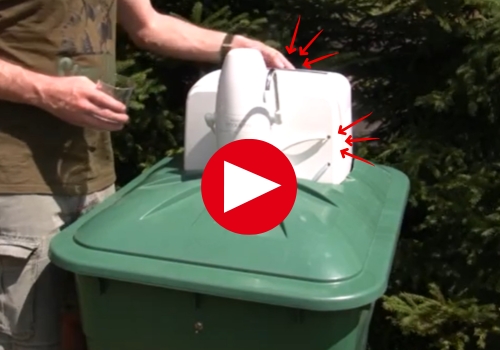









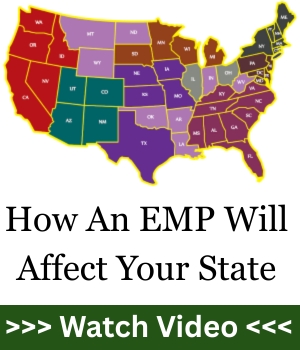


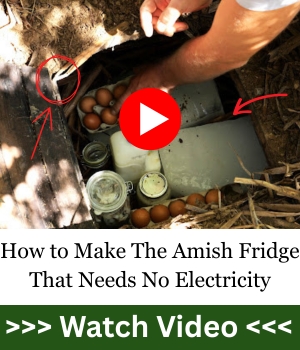








i like this article. we have 3 dogs( it was 4 till last wed. when my german sheppard pup ran under the back wheel of the pick-up and i broke his back.) and 3 cats. this looks like a good reciepe to make and put back. thankyou for the info. our pets are like family to us and with 2 grandkids living with us the dogs are good guardians for them. keep up the good articles.
i am so sorry to hear about your pup. i had the same thing happen years ago with one of mine.
I’m so sorry to hear about your pup… That’s heartbreaking. You’re absolutely right though, pets are family, and in many ways they’re part of our security plan too.
Dogs especially do double duty: companionship and guardianship.
Having recipes and storage methods ready for them makes a huge difference, because when times get hard, the last thing we want is to watch our animals suffer.
a good article, i always go back to the sustainability thing. all of these things will work for months but what about for years. we rotate out several large bags of dry food to have for short term emergencies, a few months, we live on the gulf coast.
cats can feed themselves for the most part but dogs are different. we live in a very rural area and our dogs keep the gardens and property cleared of other animals but it is not enought to support them long term. ours always eat what we eat. i’ll go hungry before my dogs do.
they take care of us and we take care of them, fair trade.
in a SHTF situation, if i am able to take some wildlife they will get the bones and other parts that we don’t use along with the table scraps : )
our dogs are everything to us. our children.
thankyou for the sentiment. i agree with you on the animals getting leftovers from animals we hunt. we live in rural missouri now but i was raised in port arthur, tx about 200 yds from taylor bayou. we had an abundance of gators to snack on if wanted. now its chiggers we have an abundance of.
That’s such an important point: short-term preps are good, but thinking about year two and three is where most people fall short.
Dogs really are a fair trade for the protection and loyalty they give us. Using bones, scraps, and even garden extras is a smart way to stretch supplies.
Some preppers also experiment with raising rabbits or chickens partly to provide extra protein for both people and dogs — something worth considering in a rural setup like yours.
My family are all deceased, so my 2 Lab-mix dogs are my companionship and friends. They let me know when someone or some-thing is around. They patrol the area that is their and my territory. I eat what they eat (I don’t eat dog food – they eat what I eat). If I didn’t have my dogs, I would be very lonely. Thank you for this wonderful article.
Ugh… I hear you. Dogs fill a gap nothing else can. Companionship, loyalty, and that natural “early warning system” when something’s not right outside. The bond you describe says everything about why prepping for them is just as important as prepping for ourselves. Stay strong!
We’ve decided to stock a good quality canned food and stock rice just for the dogs. In a SHTFS, the canned food gets cut with rice. Just do what you can.
That’s a solid plan. Rice stretches canned food a long way and still keeps the dogs full and healthy enough to work. It’s all about balance and doing what we can with the resources we have.